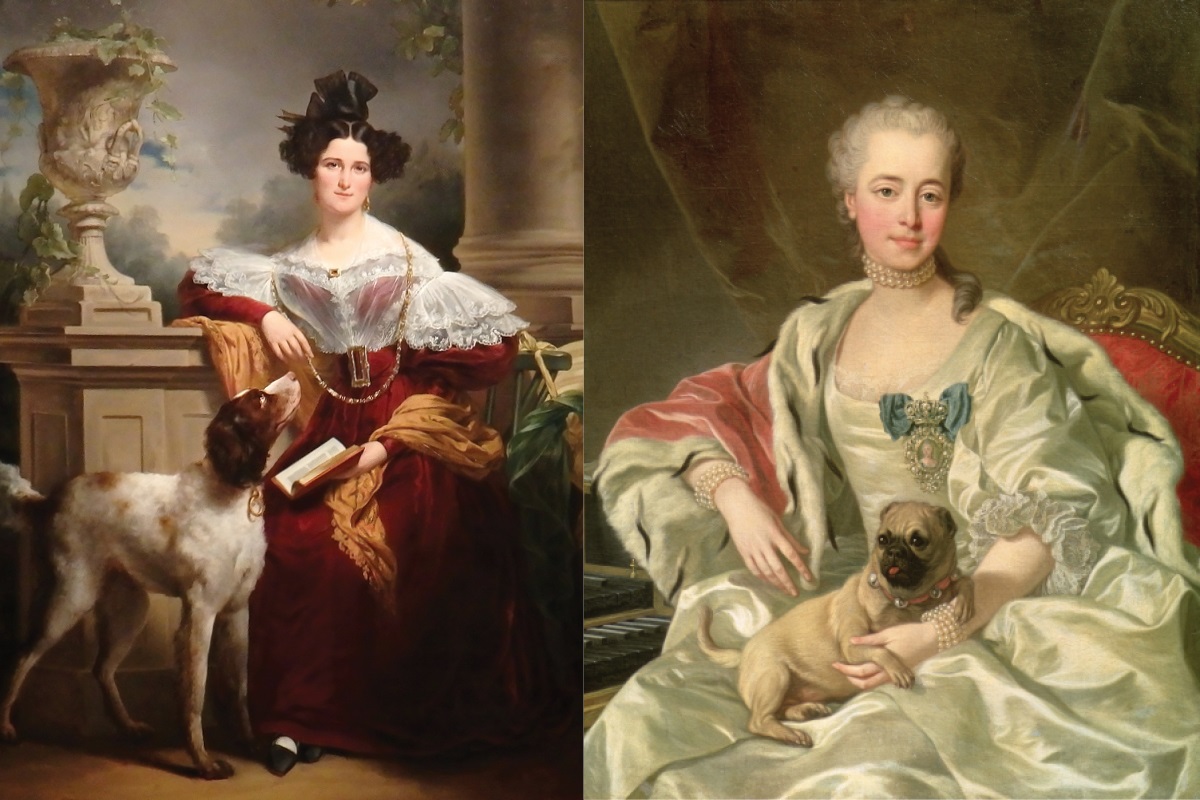While we at Pet Industry News are preparing to relaunch in print this May, we decided it would be nice to scroll back through the archives and revisit some of the great articles that have been published over our 30-year history.
Here is a flashback to an article entitled ‘Royal pets captured on canvas’, written by Rachael Pilley for a back issue of the Pet Industry News print magazine…
Walk through any art gallery and gaze upon the old renaissance art, it’s hard not to notice the animal companions of the elite rulers and high society of that era. Some of the earliest paintings of pets date back to the 16th Century. As cameras weren’t handy back then, artists had quite a task on their hands in creating the finest of portraits.
Pets were loved dearly by their wealthy owners and considered a great luxury during the 16th Century; exotic animals were often given as gifts to the monarch. Many of the Tudor families owned dogs. Greyhounds in fact were the dog of choice; they held symbolic value, appearing on the Tudor coat of arms alongside the Tudor rose. These animals were not only affectionate companions but great hunting partners. They were also used to attract fleas away from their owners!
Queen Catherine of Aragon, King Henry VIII’s first wife was known to keep pet monkeys; they reminded her of her much loved homeland of Spain. There is a famous painting of Catherine holding her pet monkey, which is now held in London in a private collection.
Another of the earliest portraits (1580) capturing palace pets was of three of the Elizabethan children, two young girls each holding their favourite pets; a guinea pig and a goldfinch and the young boy believed to be studding his own pet sits firmly with his hands on his hips. At this time, guinea pigs were used as a source of protein and eaten in South America, the Spanish begun importing them into Europe as exotic pets for wealthy European families. Guinea pigs made excellent pets for royal children.
England’s Queen Victoria was renowned for her love of animals. As a young girl she was given a Cavalier King Charles Spaniel, whom she named Dash. A prize portrait of Dash was painted in 1836; this was arranged by the Queen Mother for Victoria’s 17th birthday. During this period many more portraits of the royal pets were painted and hung upon the palace walls.
Queen Victoria’s love of animals extended to her public service, she was the first advocate for the RSPCA, established in 1824 to “prevent cruelty, promote kindness to and alleviate the suffering of animals”.
Victoria’s love of dogs and her popularity influenced the demand of pet portraits and dog ownership during the 19th Century. Wealthy and fashionable women owned lap-dogs, the ladies took their dogs everywhere. On carriage rides the small dogs were placed on the laps of the women to keep their legs warm – hence the name ‘lapdog’. The small dogs were treated as royals themselves, having trained maids to dote on their every need, sleeping on satin cushions and getting up to five brushes a day.
The most popular dogs of this time were Pomeranians, Skye Terriers, Cavalier King Charles Spaniels, and Japanese Spaniels.
We all remember Queen Elizabeth II adoration of Corgis. In 2007, the Queen had five pet Corgis; Monty, Emma, Linnet, Willow and Holly. Her love of these creatures stemmed from when she was a small child. In her reign she owned more than 30 Corgis as well as many other four legged friends including Cocker Spaniels, Labradors and Dorgis (Dachshund-Corgi crossbreeds). The Queen Mother provided a privileged life for her pets, each having their own wicker basket raised off the ground to escape draughts, a veterinary approved diet, treats and rewards for good behaviour and their own gourmet chef with an extensive menu of delectable fresh meats including rabbit and beef.
Queen Elizabeth took her dogs very seriously; in 1999 a footman was demoted from his position at Buckingham palace for a party trick pulled on the palace pets, he poured alcoholic beverage into their water and food bowls and watched them “staggering about”. The Queen was undeniably not impressed!
Many portraits and sculptures have been portrayed throughout the world of the Queen Mother and her Corgis. The crown coin, which commemorated the Queen’s Golden Jubilee shows her with a Corgi.
So, regardless of our social status, class or culture, pets have always been with us, satisfying a deep, universal human need. They provide us with a source of companionship and bring pleasure to our lives.
Whether it be sloppy doggy kisses first thing in the morning, or warming our laps on a cold winter night, protecting us from potential intruders, or just knowing that another little being is beside us keeping us company. Sometimes that’s just enough.
To stay up-to-date on the latest industry headlines, sign up to the Pet Industry News e-newsletter.

